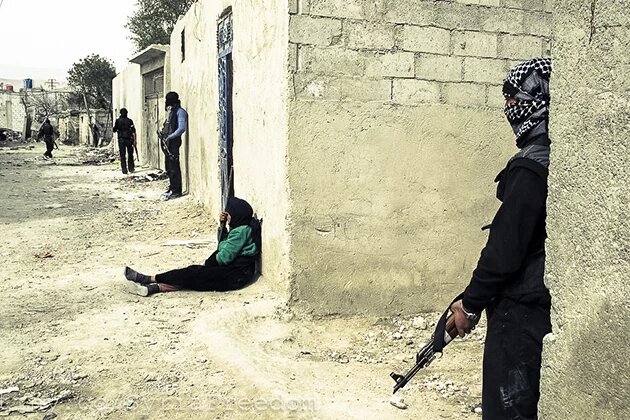
Cease fires, in the current situation, can neither achieve their objectives nor lead to a political solution to the conflict in Syria.
Stone Soup is an old story in which strangers trick the local people of a town into sharing their food: They fill an empty pot with water and stones and they wait until villagers – who did not want to share their food – - start approaching them to inquire about what they are cooking. The travelers answer that they are making stone soup– which tastes wonderful, but they could still use another ingredient to make it more delicious. The villagers ask whether they could share their soup with them. The travelers accept but they ask them to bring something to add to the soup. More and more villagers join, each adding another ingredient. Finally, a delicious pot of soup is ready and enjoyed by all. I heard this story two weeks ago in a conference about cease fires and peace building in Syria. The story was told to show how cooperation makes peoples life better and promotes peace.
Advantages of ceasefires
In the same conference, Syrian civil society activists and experts shared their insights about the different cease fires which they witnessed themselves directly or which they followed closely. After the first day was over I went home with one question on my mind: What is the real impact of cease fires on the ground in Syria? When I started discussing this question with the supporters of this approach, most of them believe in it because it sounds good, at least theoretically: 1) the conflict in Syria is not the first conflict – and unfortunately it will not be the last – and local cease fires are found in conflicts around the world – not just the simple conflicts – because people cannot fight forever; 2) cease fires could bring much needed relief to particular areas, and could sow the seeds for a longer-term resolution to the conflict; 3) It takes a long process to be achieved so even if it fails now, it will continue to be improved until it becomes successful; 4) finally, in the absence of any prospect of an international or regional deal in the near future, it’s the only any initiative that may stop daily violence in Syria.
Think again!
Although I acknowledge the theoretical benefits of cease fires – if applicable – the concerns I have, which I share with many of the critics of this approach, are based on my observations of what is happening on the ground, among those observations are: a) what is happening on the ground are deals to surrender rather than cease fires; b) the cease fires’ conditions are not fully implemented, mainly by Assad’s regime, and that is partially why they are not sustainable; c) Assad’s regime uses cease fires as part of a strategy to pacify certain areas and thereby free up forces to attack other areas— and then later return to attack the same calm areas, besiege them, starve them to death, or arbitrarily arrest its residents; d) lack of credible mediators, independent monitoring and enforcement mechanisms; e) the absence of confidence building measures; f) the absence of successful cease fire examples that could be used as a model to encourage others; g) the absence of a solution to the conflict in Syria.
Do no harm
Some of the supports of this approach may know of the obstacles cease fires are facing in Syria, however, they may still argue that a bad idea is better than no idea and that if those cease fire attempts could help one person then it is better than nothing. This argument is true in principle but it contradicts another essential principle: do no harm. It might be expected for the fighting to intensify whenever preparations for negotiations start, but usually it is a price people have to/are willing to pay to achieve peace, even temporarily. What has been happening in Syria, though, is that people pay the bloody price without achieving anything in return. Cease fires, in general, have led to more killing; as the fighting intensifies before the negotiations and intensifies again after the negotiations to bring back the other party to the table with more compromises. Therefore, it important to stress here that sometimes no idea is better than a bad idea especially if the bad idea leads to more killing and gives people excuses – particularly in the absence of a genuine will – not to look for other ideas.
Don’t wait to help
In Arabic we have another version of the stone soup story: A poor woman lives with her young children in a tent and she depends mainly on charity to feed them. Whenever she does not have enough money to feed them, she fills up a pot with water and stones and starts a fire underneath it to give her hungry children the impression that she is cooking. She asks them to sleep until the food is ready and whenever they wake up inquiring about the food, she tells them to go back to sleep and promises to wake them up whenever the food is ready. The day passes without feeding the children and the mom finally sleeps hoping to get enough money the following day to feed them.
Cease fires are most likely to be an essential part of any solution, but they need to be part of a larger, comprehensive central peace plan. That being said, maybe it is time to start thinking about the harm that we might cause and are causing in case we blindly keep pushing for this approach without assessing its impact on the potential beneficiary group. This does not mean that we should stop trying to find other ways to help Syrians, or improve the conditions for the cease fires to be successful, until the right moment comes for a political solution in Syria.